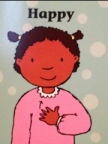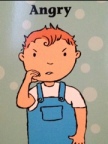 A mother once told me how she was upset with herself for not using a parenting style discussed in a book she was currently reading. This is someone I highly respect- adoptive parent, thoughtful, caring, and highly involved in her son’s therapy. I was surprised to hear how quick she put herself down because of this author’s idea of the “right way” to parent. Thinking about how you may have done things differently is one thing, but beating yourself up over it is another!
A mother once told me how she was upset with herself for not using a parenting style discussed in a book she was currently reading. This is someone I highly respect- adoptive parent, thoughtful, caring, and highly involved in her son’s therapy. I was surprised to hear how quick she put herself down because of this author’s idea of the “right way” to parent. Thinking about how you may have done things differently is one thing, but beating yourself up over it is another!
There are definitely some wonderful approaches to parenting out there… Positive Parenting, Love and Logic, Attachment Parenting, etc. but I don’t believe there is ONE RIGHT way to parent that works for everybody. There is not one right way to potty train. There is not one right way for your baby to sleep. There is not one right decision to make on whether to let your child have diluted juice or not. In reality, if one parenting book tells you to do one thing, I guarentee there is another book out there that will have a variation, or even a contradiction. So, please, don’t be so hard on yourself! And don’t be so hard on your fellow mommies out there!
Are there some general guidelines out there? Are there general standards, for moral and health reasons, that all parents should follow? Absolutely! Some are even recommended by the American Pediatric Association. These are not what I am referring to now. What I am talking about are the “styles” and “techniques” that are offered to us each and every day as parents and all the little things that we criticize ourselves and others so much for.
Every child, every parent, every family, and every circumstance is different. We all have values, priorities, obligations, and a bunch of other “stuff” that affects how we choose to raise our children. Read all the books, magazines, and blogs you want, but at the end of the day, you have to make a decision to do what fits best with your child.
No matter the age of your kids, when you have a choice to make, gather all the information you can, reflect on your own goals and values, and make the best decision you know how with the information you have available. If you learn later of a better way you could have handled that stage of your child’s life, or that a certain food is not so good after all, you can rest assured that you did the best you knew how at that time.
As a therapist, it’s important to me that parents of my child and adolescent clients feel a sense of confidence in themself and their abilities. Judgment from me, other parents, or family members is not helpful.
In summary, there are several parenting philosophies that I think are fantastic. I tend to pull a little bit from each and apply what works with my own philosophy and values. So, is there a right way to parent? There is for me! But it may be different for you! What do you think?
You May Also Like:























